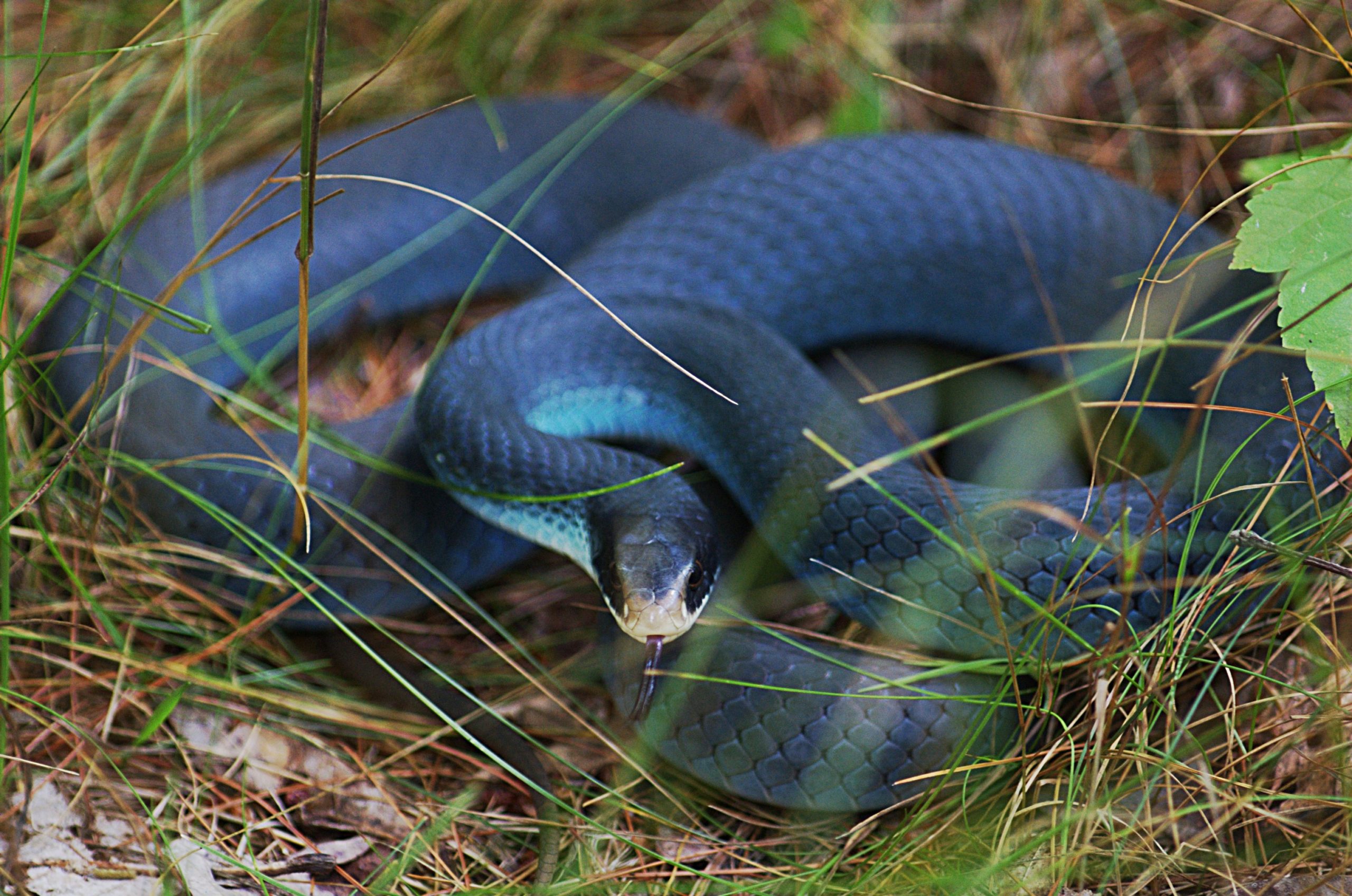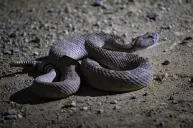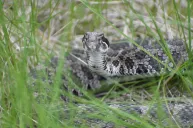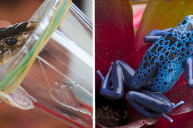The blue racer snake is large and extremely fast.
Running into snakes is a common occurrence for me here in Michigan. I run into northern water snakes and garter snakes all the time. Every so often, I catch a glimpse of another species too. I usually do not get a good look at this one because they are huge and extremely fast. They usually zip out of the area before I can get a close look.
We are talking of course, about the blue racer, or Coluber constrictor foxii as it is known by its scientific name. This snake species can be quite intimidating to anyone with a snake phobia, especially since it is not uncommon for an adult blue racer to grow to five or six feet in length.
However, these snakes are quite fearful of people and often slither away at the first sight of human activity. That has not stopped untrue rumors about this species arising. Today we will attempt to debunk some of them and just give you the straight facts about this fascinating reptile of North America.
Appearance and behavior

Wikimedia Commons: TomachMichalak
We already mentioned the size of this non-venomous species, it is one of the largest snakes you will find in many areas. This makes it easy to differentiate this animal from smaller snakes. Not everyone may consider a snake to be beautiful, but we would pick the blue racer as one of the nicer-looking snakes of the United States. It does not have any intricate markings, just a uniform gray or bluish color that really pops against their smooth scales. The head is usually much darker than the rest of the body. The bellies of these snakes are a milky white color.
That bluish tint coloration seems to be most common and helps differentiate this species from similar slender snakes like the black rat snake, and subspecies like the southern black racer, and eastern racers. Some people may mix up this snake with a similar species, the North American racer (Coluber constrictor). The two have a similar appearance, but the North American racer is usually darker in coloration.
Juvenile blue racers do have a slightly different appearance than the adults. They have subtle dark blotches or bars on their body. These eventually fade as the hatchlings grow and the animal becomes a more uniform color. Your best chance of seeing a younger snake is in late summer when blue racer eggs hatch.
Blue racers feed mostly on mice, rats, and other small rodents. However, they have also been known to eat birds, and amphibians too. Sometimes they will eat bird eggs too. They are also well-known for cannibalizing other snakes whenever the opportunity presents itself.
If you have ever encountered this snake in the wild, you know where the "racer" part of the common name originated. This is one of the faster snakes you will encounter in the wild. Most snakes are afraid of humans, but blue racers seem to have a greater fear than others. Their first reaction is usually to slither out of the area as quickly as possible. If they are cornered, they will sometimes shake their tail aggressively like a rattlesnake. They are probably hoping you will mistake them for that venomous snake species and leave it alone.
Range and habitat
Various forms of open habitat are preferred by this snake for its home. They do tend to prefer places with plenty of crevices and cover to hide and ambush prey. Old fields, forest edges, and savannas are common places to encounter this snake. The few times I have run across it, this species was usually quickly zipping through the leaf litter across hiking trails in prairie preserves.
The native range of these snakes has become reduced a bit over the years. This is mostly because of habitat loss, however this species is also unnecessarily killed out of fear simply because of its size. Today, the blue racer is commonly found mostly in the Midwest. Mostly in Michigan, Iowa, Indiana, Ohio, Wisconsin, Illinois, Minnesota, and South Dakota. Populations are also found far in the western United States in Oregon and Washington and as far south as Kentucky.
The blue racer has an endangered species status in Ontario. The snake used to have a wider range across the Canadian province. Unfortunately, wildlife officials in Canada have determined that the snake is now only found in small numbers on Pelee Island. The population there does not have a lot of room to expand further since the island is cut off out in Lake Erie.
The blue racer is a beautiful and fascinating reptile that is not often encountered due to its shy nature. If you get the chance to see one in the wild, it is best to simply leave it alone and consider yourself fortunate. That is, if you can even get a good look before it "races" away!
Products featured on Wide Open Spaces are independently selected by our editors. However, when you buy something through our links, we may earn a commission.
For more outdoor content from Travis Smola, be sure to follow him on Twitter and check out his Geocaching and Outdoors with Travis YouTube channels.
NEXT: THE AXIS DEER AND HOW THEY'RE IMPACTING PARTS OF THE UNITED STATES
WATCH





